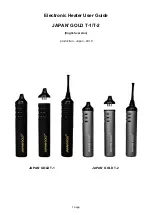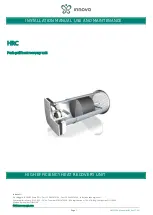
16
EN
6.2 PREPARATION
Cut the ends of the pipes being prepared for welding at right-
angles, using suitable pipe-cutting tools. Be careful attention to
avoid any bending or ovalize the pipe.
6.3 SCRAPING AND MARKING
Smoothly scrape off the oxidized surface layer from the
end of the pipe or fitting using suitable tools. Make sure
to get an even, overall scraping action extending over
at least 1 cm for each half of the coupler. If this
scraping is not done accurately, only a weak surface
binding will be achieved, because the oxidized layer
has inhibited molecular penetration between the parts
and thus interferes with the proper outcome of the
welding action. Scraping with sand paper, rasps, or
emery grinding wheels is absolutely unsuitable.
Remove the coupler from its packaging only before the welding starts and clean the
inside of the coupler in compliance with the manufacturer’s recommendations.
6.4 POSITIONING:
Slide the ends of the pipes into the coupler. It is
advisable to align the pipe and couplers in order:
•
to ensure that the parts remain in a stable
position throughout the welding and cooling phases;
•
to avoid any mechanical strain on the joint
during the welding and cooling phases.
An aligning device can be used to achieve optimal
aligning.
6.5 WELDING
The area where welding is done must be protected against particularly
unfavourable weather conditions, such as wet environments and
temperatures not suitable to the operations.
Never weld a coupler twice.
6.6 COOLING
The cooling temperature varies, depending on the diameter of the
couplers and the ambient temperature. Always comply with the timing
recommendations of the fitting manufactuer.
The removal of the aligning devices and disconnection of the welding
cables must be done only after the cooling phase has come to a
complete end.
















































